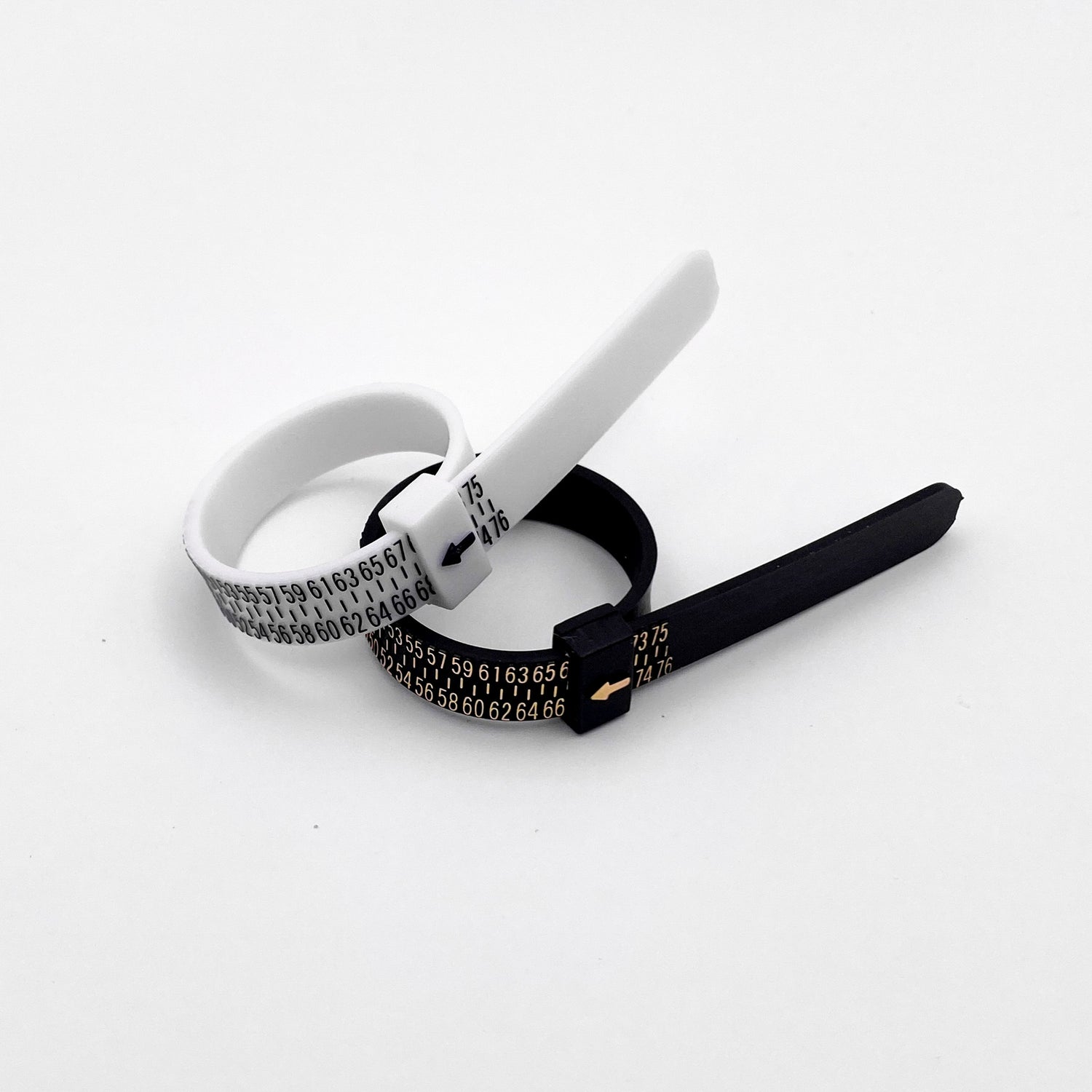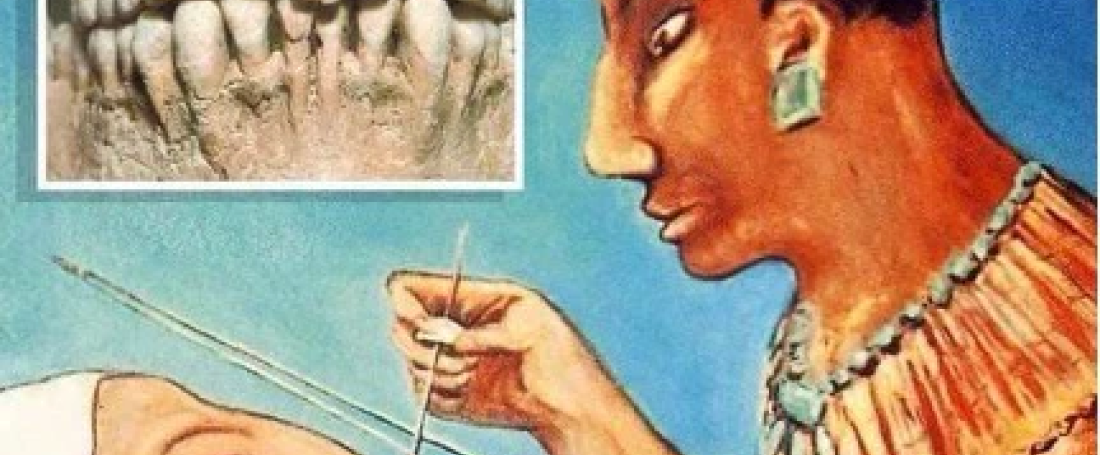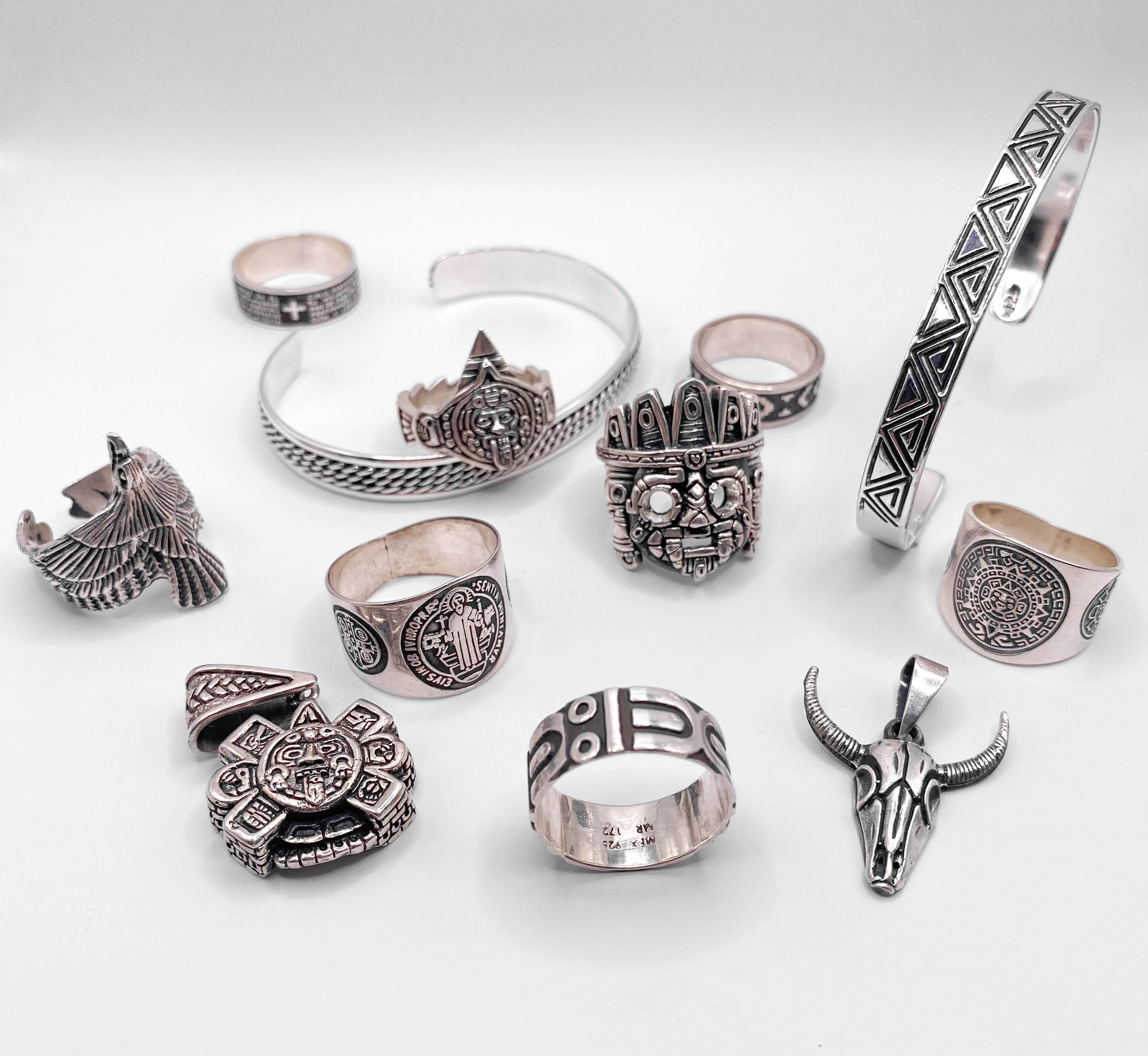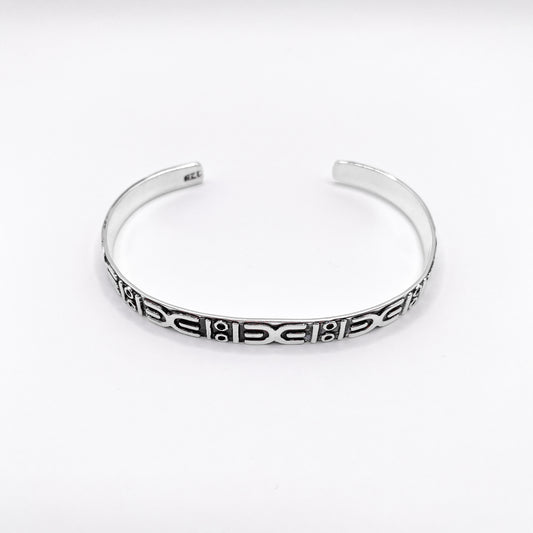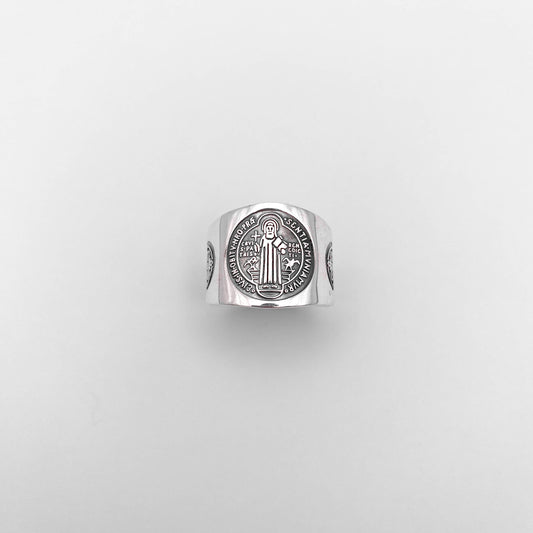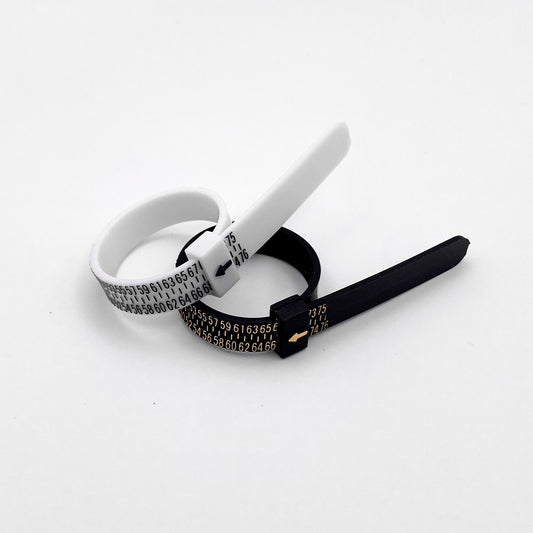The art of jewelry is a journey through time, an exploration of cultural traditions and an expression of individuality. In this fascinating world of silver ornaments, today we will look at the glorious legacy of four pre-Columbian civilizations of Latin America, where jewelry was not only adornments, but also silent witnesses to history.
Welcome to the world of artisan silver jewelry for men of Latin American origin, where each piece tells a unique story, rooted in the rich cultures of ancestral civilizations. Among them, the Mayans, the Aztecs and the Incas occupy a particularly prestigious place. These peoples have made exceptional contributions to the art of jewelry, using precious materials and meticulous techniques to create works that transcend aesthetics to reach a level of deep cultural significance.
Deep in the mysterious forests of Central America, the Mayans created jewelry of exquisite beauty using primarily jade. For the Mayans , jade was not just a precious stone, but a true embodiment of life, closely linked to their religious beliefs and royalty. But their jewelry story is not just limited to traditional ornaments. It also includes an unusual and fascinating practice: dental jewelry.
The Aztecs , in the heart of Mexico, were renowned for their skills in making gold and silver jewelry. Learn how their jewelry was used to celebrate religious rituals, show wealth and symbolize power.
The Incas , who dominated the Andes, were masters of metallurgy. Immerse yourself in their world of gold, silver and copper jewelry, which was often used to represent social hierarchy and connection to nature.
Chapter 1: The Mayans - Masters of Silver and Dental Jewelry
In the heart of the vast forests of Central America, the Mayans built one of the most fascinating civilizations in history. Active for over two millennia, from 2000 BC. Before the arrival of the Spanish conquistadors in the 16th century, the Maya were spread across a vast region that encompassed southern Mexico, Guatemala, Belize, Honduras and El Salvador. This civilization left a cultural and artistic heritage of exceptional richness, particularly with regard to jewelry.

(Image source: https://fr.wikipedia.org/wiki/Langues_mayas )
The Shard of Mayan Silver
Although the Mayans are often associated with the use of precious stones like jade, they were also skilled in making silver jewelry. Silver was extracted from local deposits and transformed into magnificent pieces of goldwork. Mayan silver jewelry was often worked with geometric patterns, representations of nature, and religious symbols.
These silver jewelry were worn by both men and women and had multiple meanings. They were used to express social status, to honor the gods, and to mark important life events, such as weddings and religious ceremonies. Silver necklaces, bracelets, earrings and pendants embodied the finesse of Mayan craftsmanship and were priceless treasures.
The Unique Art of Dental Jewelry
A distinctive aspect of Mayan adornment was the practice of dental jewelry. The Mayans delicately embedded precious stones, such as jadeites and shells, into their teeth. This practice was reserved for the elite, and dental jewelry was a sign of high social status, beauty, and sometimes even spiritual protection.

(Image source: https://www.mexicodesconocido.com.mx/dentista-cultura-maya-dientes-piedras-preciosas.html )
Mayan dental jewelry was a unique form of artistic expression, reflecting the ingenuity and creativity of this civilization. They were often used to adorn the upper incisors, creating a dazzling contrast to the smile of the wearer.

(Image source: https://geneasud.blogspot.com/2016/01/lo-que-los-mayas-le-hacian-dus-dientes.html )
Mayan Rulers and their Jewelry
Several famous Mayan rulers are known to have worn remarkable jewelry. Among them, we can cite the famous Ahau (ruler) K'inich Janaab' Pakal whose famous jade funerary mask is an emblematic piece of goldwork of Mayan art. K'inich Janaab' Pakal also wore silver jewelry inlaid with jade and shells.

(Image source: https://www.chichenitza.com/es/blog/pakal-el-grande )
Another influential ruler was Yik'in Chan K'awiil, a ruler of Copán, whose tomb revealed an impressive hoard of silver and jade jewelry. These Mayan rulers were not only political leaders, but also religious figures, and their jewelry was both symbols of power and commitment to their beliefs.
Through the brilliance of silver and tooth jewelry, the Mayans left an indelible mark on the world of jewelry. Their creations reflect the artistic sophistication of this civilization and its deep attachment to beauty and cultural significance. In future chapters we will explore other jewelry treasures from the pre-Columbian civilizations of Latin America, but Mayan jewelry will forever remain an exceptional example of the art of goldsmithing.
Chapter 2: The Aztecs - Symbolism of the gods
The Aztecs, a fascinating civilization that emerged in the Valley of Mexico in the 14th century, left us a rich cultural and artistic heritage and, of course, an extraordinary jewelry tradition. To understand their relationship with silver jewelry, let's first delve into their history and geography.

(Image source: https://enciclopediadehistoria.com/cultura-azteca/ )
The Aztecs: A Flourishing Empire
The Aztecs, also known as the Mexicas, flourished between the 14th and 16th centuries, establishing their capital, Tenochtitlan, on an island in the heart of Lake Texcoco in the Valley of Mexico. Their empire spanned much of what is now central Mexico, and they were known for their hierarchical social structure, centralized government, and rich religious culture.

(Image source: https://rimasdecolores.blogspot.com/2018/10/los-aztecas-para-ninos.html )
The Shine of Aztec Silver
The Aztecs mastered the art of working silver to create jewelry of great beauty and complexity. Silver was mined from local mines and fashioned into a variety of pieces including pendants, necklaces, bracelets and earrings. The Aztecs often used shells and gemstones to adorn their silver jewelry, creating a striking visual contrast.
These silver jewelry were not just adornments, but also had deep meaning in Aztec culture. They were worn to symbolize wealth, social status and to honor the gods. Aztec jewelry designs were often inspired by nature, sacred animals, and deities, and they also served as protective talismans.
Aztec Rulers and Their Silver Shine
Among the most famous Aztec rulers, the Tlatoani (title of the highest military and religious leader) Moctezuma II stands out for his key role in the history of the Aztec empire. Moctezuma II was known for his magnificence and his taste for silver jewelry and precious stones. Her personal adornments were lavish, reflecting the power and wealth of the Aztec empire at its height.

Another important figure was Ahuitzotl, an Aztec emperor renowned for his passion for conquest and construction. He also left a legacy of silver jewelry, some of which was discovered in Aztec royal tombs.
Aztec silver jewelry demonstrates their artistic mastery and keen sense of symbolism. They have survived through the centuries to remind us of the splendor of this pre-Columbian civilization. In the next chapter, we will explore other jewelry treasures from Latin American civilizations, the Incas, but the silver jewelry of the Aztecs will remain an invaluable source of inspiration for lovers of exceptional craftsmanship.
Chapter 3: The Incas - The Magic of Metals
In the heart of the majestic Andes mountains (place of the altiplano), the Incas built one of the largest and most impressive empires in pre-Columbian history. Their history, their location and their mastery of silver make them an essential subject for the study of pre-Columbian jewelry.

(Image source: https://fr.wikipedia.org/wiki/Empire_inca )
The Incas: An Empire of the Heights
The Inca Empire flourished in the 15th century, stretching from Colombia to Chile with modern Peru as its heartland, encompassing much of the Andes of South America. The Incas were known for their complex political and economic organization, their impressive architecture, their well-developed road system, and their rich religious culture.

(Image source: https://historiaperuana.pe/periodo-autoctono/imperio-inca-tahuantinsuyo )
Inca Money: Meaning
Silver was a precious metal and abundant in the Andes, and the Incas used it to create jewelry of great beauty. Inca silver jewelry was often fashioned with geometric patterns, depictions of nature, and religious symbols. They were worn by all levels of society and were designed to be both aesthetic and functional.
Inca silver jewelry served a variety of purposes. They were status symbols, but also religious offerings to the gods. The Incas believed in a close relationship between man and nature, and their jewelry often reflected this spiritual connection.
Inca Leaders and Their Legacy
Among the most famous Inca rulers, Emperor Pachacuti is an iconic figure. It was he who transformed the Inca Empire into a major regional power. Her silver jewelry was a true work of art, encrusted with precious stones and detailed ornaments.
Another notable emperor was Huayna Capac, who expanded the empire north and south. Her silver jewelry was also magnificent and symbolized the power of the empire under her rule.

(Image source: https://historiaperuana.pe/biografia/huayna-capac )
Incan silver jewelry, with its sophisticated designs and deep cultural significance, is a testament to the exquisite craftsmanship of this civilization. They are also a reminder of the importance of silver in Inca culture, both as a precious metal and as a spiritual symbol.
